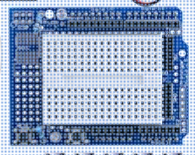jenkinsontherun
100+ Head-Fier
Thanks @SilverEars , I thought about that. I think there's just no way around reading textbooks, and building things.
https://www.amazon.com/G-Randy-Slone/e/B000APG19O?ref=dbs_a_def_rwt_bibl_vu00_i2 I might start with this.
Some tools I saw were Raspberry Pi, and these types of
 gadgets.
gadgets.
Truth be told, I put off learning some of the stuff that I had set myself to learn, and time isn't an excuse. I think just gotta take it step by step. Not many people in their 20's want to set out and learn this stuff other than studying for an exam...so there's no example to follow. So really appreciate you guys giving advice for real.
Yea other than that, I don't expect you to give me much detail on what to buy to test out, although I would like to. A lot of this stuff can be googled, especially if it's just on what to buy. BUT a little advice won't hurt .
.
It seems just gotta go the hard way, get a textbook, spend time. No shortcut. But I will do it.
https://www.amazon.com/G-Randy-Slone/e/B000APG19O?ref=dbs_a_def_rwt_bibl_vu00_i2 I might start with this.
Some tools I saw were Raspberry Pi, and these types of

Truth be told, I put off learning some of the stuff that I had set myself to learn, and time isn't an excuse. I think just gotta take it step by step. Not many people in their 20's want to set out and learn this stuff other than studying for an exam...so there's no example to follow. So really appreciate you guys giving advice for real.
Yea other than that, I don't expect you to give me much detail on what to buy to test out, although I would like to. A lot of this stuff can be googled, especially if it's just on what to buy. BUT a little advice won't hurt
 .
.It seems just gotta go the hard way, get a textbook, spend time. No shortcut. But I will do it.
Last edited:


















